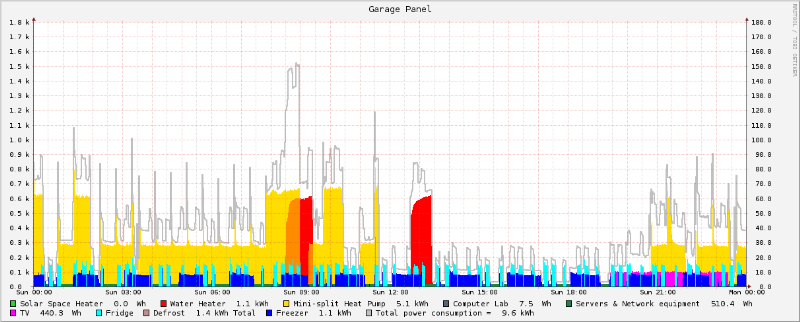












Billy -




Iterations are fine, we don't have to be perfect
My 2nd Location:Florida HardinessZone:10 AHS:10 GDD:8500 Rainfall:2in/mth winter, 8in/mth summer, Soil:Sand pH8 Flat




Billy -


 1
1




Iterations are fine, we don't have to be perfect
My 2nd Location:Florida HardinessZone:10 AHS:10 GDD:8500 Rainfall:2in/mth winter, 8in/mth summer, Soil:Sand pH8 Flat










Iterations are fine, we don't have to be perfect
My 2nd Location:Florida HardinessZone:10 AHS:10 GDD:8500 Rainfall:2in/mth winter, 8in/mth summer, Soil:Sand pH8 Flat






Iterations are fine, we don't have to be perfect
My 2nd Location:Florida HardinessZone:10 AHS:10 GDD:8500 Rainfall:2in/mth winter, 8in/mth summer, Soil:Sand pH8 Flat




My opinions are barely worth the paper they are written on here, but hopefully they can spark some new ideas, or at least a different train of thought




Kyle Neath wrote:I'm hoping myself to do all kinds of clever stuff with rpi's once I get my setup solid. But I also know I have a tendency to dream a more time-filled life than I live..
My opinions are barely worth the paper they are written on here, but hopefully they can spark some new ideas, or at least a different train of thought








 ?? in winter
?? in winter
John Daley Bendigo, Australia The Enemy of progress is the hope of a perfect plan
Benefits of rainfall collection https://permies.com/t/88043/benefits-rainfall-collection
GOOD DEBT/ BAD DEBT https://permies.com/t/179218/mortgages-good-debt-bad-debt




John C Daley wrote:
For me lights and water pump are critical.
I dont use a fridge in winter, in summer its never an issue
Solar electric Hot water?? in winter
Winter of course is the worst time in some climates for solar power, but using solar power to heat anything, in Australia, is considered madness, unless its over flow power from
collectors on Grid connected systems with low payback from the utilities supplier.
My opinions are barely worth the paper they are written on here, but hopefully they can spark some new ideas, or at least a different train of thought








John Daley Bendigo, Australia The Enemy of progress is the hope of a perfect plan
Benefits of rainfall collection https://permies.com/t/88043/benefits-rainfall-collection
GOOD DEBT/ BAD DEBT https://permies.com/t/179218/mortgages-good-debt-bad-debt




Billy -
 1
1





My opinions are barely worth the paper they are written on here, but hopefully they can spark some new ideas, or at least a different train of thought




 2
2




My opinions are barely worth the paper they are written on here, but hopefully they can spark some new ideas, or at least a different train of thought




Life on a farm is a school of patience; you can't hurry the crops or make an ox in two days.
Henri Alain

|
Listen. That's my theme music. That's how I know I'm a super hero. That, and this tiny ad told me:
The new permaculture playing cards kickstarter is now live!
https://www.kickstarter.com/projects/paulwheaton/garden-cards
|





